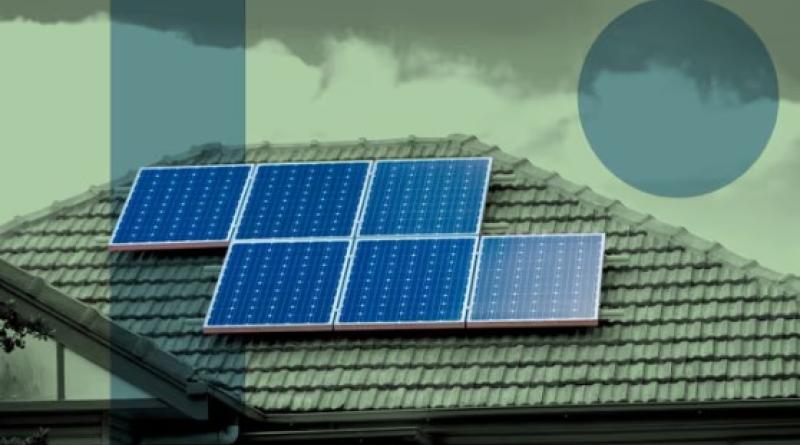How to tell if it’s time to replace your solar panels and what to do with your old ones

More than 3.5m Australian rooftops are turning the sun into electricity with solar panels and more than 1m of those have been at it for over a decade. So, how long can you expect your solar panels to last?
I’ve seen vintage solar panels that have weathered three decades in the Australian sun and are still going strong. And I’ve seen some cheap, nasty installations that are toast after a couple of years. In between, countless systems soldier on, functional but with severely degraded output.
How to tell if it’s time to replace your solar panels and what to do with your old ones
You might be wondering why your panels are underperforming. A routine inspection and quick app check would tell you if need new ones
Change by Degrees offers life hacks and sustainable living tips each Saturday to help reduce your household’s carbon footprint
- Got a question or tip for reducing household emissions? Email us at changebydegrees@theguardian.com
More than 3.5m Australian rooftops are turning the sun into electricity with solar panels and more than 1m of those have been at it for over a decade. So, how long can you expect your solar panels to last?
I’ve seen vintage solar panels that have weathered three decades in the Australian sun and are still going strong. And I’ve seen some cheap, nasty installations that are toast after a couple of years. In between, countless systems soldier on, functional but with severely degraded output.
How Australian households can go electric, cut emissions and save money
If you’ve got solar panels sitting atop your home, you might be looking at your rising electricity bills and wondering if your panels are underperforming.
Here’s a straightforward guide to whether your solar system is struggling and, if so, what you should do about it, including disposing of the old panels.
How can you tell if your panels are failing?
Routine inspection
Regardless of how your panels seem to be performing, it’s smart to get a professional inspection every five years. Why, you ask, when other household electrics aren’t regularly checked? The answer lies in the high-voltage DC electricity used by most solar systems. Exposed to the elements, if things go awry with this DC current, it could lead to fires. So, if it’s been more than five years since a professional had a look, schedule an inspection.
A thorough inspection by a solar-accredited electrician will cost $200-$300. This should include panel cleaning and a comprehensive report to confirm your system’s performance. If something’s amiss, they’ll advise on the necessary repairs or replacements.
Quick desk check
If your system is relatively new (under five years old) or has been recently inspected, you can gauge its performance without leaving your desk.
While there are third-party monitoring platforms that can alert you to underperforming systems, most people just rely on their solar inverter’s app or – if your system is really old – the fading LCD screen on the inverter itself.
Averaged over 12 months, the amount of sunshine falling on your roof is fairly consistent. For solar that’s mostly shade free, we can estimate how much energy you should have generated and compare that with the generation reported by your inverter.
Step 1: Find the multiplication factor associated with your nearest city:
-
Adelaide: 4.3
-
Alice Springs: 5
-
Brisbane: 4.3
-
Cairns: 4.2
-
Canberra: 4.3
-
Darwin: 4.4
-
Hobart: 3.5
-
Melbourne: 3.8
-
Perth: 4.4
-
Sydney: 4
Step 2: Multiply this by your system size in kW to get your expected average daily generation, then multiply by 365 to get your expected 12-month generation total.
For example: I have a 6.6kW system in Adelaide.
6.6 x 4.2 x 365 = 10,117kWh per year of expected energy output over 12 months
Step 3: If your system faces east or west, multiply by 0.85 to account for the sub-optimal orientation of the panels. My system is facing half east, half west, so:
10,118 x 0.85 = 8,600kWh per year expected
Step 4: Compare this with your system’s actual output over the past year as reported by your inverter’s display or monitoring app. More than 20% discrepancy? Time to ring up an installer and invest in a report on your system performance and condition.
Solar panel warranties are long
If your solar electrician finds an underperformance issue, their report will tell you where the problem lies. First, determine if it’s a warranty issue. Installation issues, like wiring, are usually covered for five years. Inverter problems? They’re typically under warranty for 10 years. As for the panels, recent purchases come with a 25-year warranty. If your panels are older, they’re likely covered for 10-25 years.
Remember, in Australia, the installer who sold you the solar system is liable for the warranty, regardless of the manufacturer’s stance or any unreasonable small print. If the installer has gone broke, the manufacturer must then take responsibility for honouring the warranty.
If the installer or manufacturer gives you the run-around, fill in the blanks of this ACCC letter and drop it on them by email and snail mail – in my experience, it works wonders.
Time for new panels? Then go big
If your panels are beyond their warranty period, it’s time for a replacement. With the ongoing drive to electrify transport, move away from gas and integrate home batteries, your future solar needs will likely surpass what you required a decade ago, so consider filling your roof with the latest high-efficiency solar panels. The average solar system size sold in Australia today is 9kW.
Disposing of the old system
Your old inverter might still have some life in it. Consider selling it online. The solar racking, being aluminium, is recyclable and any scrap metal merchant will happily take it.
Panels, however, are trickier. If you’re getting a new installation, the installers typically handle the old panel disposal. But if you’re stuck with the panels, or don’t trust your installer to do the right thing, you can:
-
List them online (Gumtree, Facebook Marketplace, etc): some folks want second-hand panels. Give it a shot.
-
E-waste spots: some take them for free, some might charge.
-
Solar recyclers: there’s the Solar Recovery Corporation in Biloea and Townsville, Lotus Energy Recycling in Melbourne and WA Solar Recycling in, you guessed it, WA. A few places might charge a fee, like Elecsome (Richmond Valley, NSW; Wellington shire, Victoria; Toowoomba, Queensland), Ecoactiv (“every major city”) and PV Industries (Melbourne and Sydney). It’s a good idea to give them a call before arriving with a trailer of old panels.
If you pick an installer who knows their stuff and cares about the environment, you’ll get new panels that should last three decades or more and be confident that your old panels will be disposed of properly and recycled where possible.
Finn Peacock is an engineer and the founder of solarquotes.com.au
This week’s reader tip
We have buckets and other containers that we put out on the edge of the deck when it rains to catch the rainwater from the deck roof. Any rain collected is easily used on the garden plants or to flush the toilet or run the washing machine. I call them our Hope Buckets.
Photograph: Glenn Hunt/AAP





